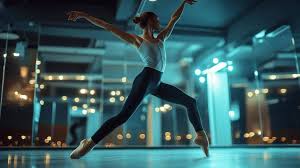In professional dance, where artistry meets athleticism, the physical demands are as complex and rigorous as any elite sport. Dancers train for hours each day to perfect movement that appears effortless on stage, but beneath the surface, their bodies especially their joints are under immense and continuous stress.
Unlike many athletes who specialize in a narrow range of motion or movement patterns, dancers require exceptional flexibility, strength, balance, and control across the entire body. This makes joint health not just important but foundational to performance, injury prevention, and career longevity.
Understanding Joint Health in Dance
Joints are where bones meet and movement happens. They are supported by structures such as cartilage, ligaments, tendons, and the surrounding muscles. Healthy joints allow for smooth, controlled, and pain-free movement key requirements for any dancer.
In disciplines such as ballet, contemporary, jazz, and modern dance, performers frequently push their joints to extreme ranges of motion. For instance:
- The hips must open for turnout and deep pliés.
- The knees absorb shock during jumps and landings.
- The ankles support weight en pointe or during quick directional changes.
- The spine is in constant motion flexing, extending, and twisting.
Over time, these demands can lead to joint wear and tear, especially if proper care and technique are neglected. Chronic joint stress can result in inflammation, reduced range of motion, joint instability, and eventually, injury.
Common Joint Issues Among Dancers
Some of the most common joint-related problems dancers face include:
- Patellofemoral pain syndrome (knee pain from misalignment or overuse)
- Ankle impingement (pinching due to bone or soft tissue irritation)
- Hip labral tears (damage to cartilage in the hip socket from extreme range of motion)
- Spinal disc injuries (especially in the lumbar region from repeated extension and twisting)
- Joint hypermobility syndrome, which, while giving the illusion of flexibility, can lead to instability and long-term joint degradation if not properly managed.
Early signs of joint stress such as persistent aches, swelling, or clicking sounds should never be ignored, as these can escalate into career-limiting conditions.
Key Strategies to Preserve and Enhance Joint Health
1. Strength and Stability Training
Dancers need more than just flexibility they require strength and control around every joint. A strong core, glutes, and stabilizing muscles help align joints and distribute forces evenly during movement. Resistance training, Pilates, and targeted physical therapy exercises are essential for building joint stability without compromising mobility.
2. Controlled Flexibility
Extreme flexibility is often praised in dance, but uncontrolled range of motion can strain joints. Dancers must balance stretching with active mobility work training the muscles to control movement at end ranges rather than relying on passive flexibility alone.
3. Technique and Alignment
Proper technique ensures the body moves in a biomechanically sound way, reducing unnecessary joint strain. For example, maintaining correct turnout from the hips rather than forcing it from the knees or ankles can prevent joint misalignment and overuse injuries. Regular feedback from teachers or physical therapists is vital to correct small errors before they become major issues.
4. Warm-Up and Cool-Down
Skipping a warm-up can make joints vulnerable to injury, as cold muscles and stiff connective tissues are less pliable and more prone to tearing. A good warm-up increases blood flow, synovial fluid production (which lubricates joints), and prepares the nervous system for dynamic movement. Cool-downs help flush out waste products and restore normal joint function post-training.
5. Recovery and Rest
Professional dancers often underestimate the importance of rest, yet recovery is where real progress and repair happen. Overworking joints without adequate recovery can lead to breakdown and chronic conditions. Tools such as foam rolling, massage, hydrotherapy, and adequate sleep support joint recovery and overall health.
6. Nutrition for Joint Support
A dancer’s diet should include nutrients that support joint tissue:
- Collagen and gelatin for connective tissue integrity
- Omega-3 fatty acids (found in fish, flaxseed, and walnuts) for inflammation reduction
- Vitamin D and calcium for bone and joint strength
- Hydration, which keeps joints lubricated and improves shock absorption
Joint Health and Career Longevity
Perhaps one of the most compelling reasons to focus on joint health is its direct impact on a dancer’s career lifespan. Unlike recreational dancers, professionals are expected to perform consistently at a high level over many years. Unfortunately, many promising dancers face early retirement due to chronic joint injuries that could have been prevented with earlier intervention and education.
A holistic approach that combines physical conditioning, technique, recovery, and self-awareness empowers dancers to care for their joints proactively. Dance companies, schools, and institutions are increasingly recognizing this need by integrating cross-training, physical therapy, and wellness programs into their curricula.
In the competitive world of professional dance, talent and artistry will always shine, but it is the strength, health, and resilience of the body particularly the joints that sustains a dancer’s performance over time. Prioritizing joint health is not just a matter of injury prevention; it is a cornerstone of peak physical expression and career longevity.
Dancers who invest in their joint health are not only protecting themselves but enhancing the quality, consistency, and power of their craft both today and for years to come.

